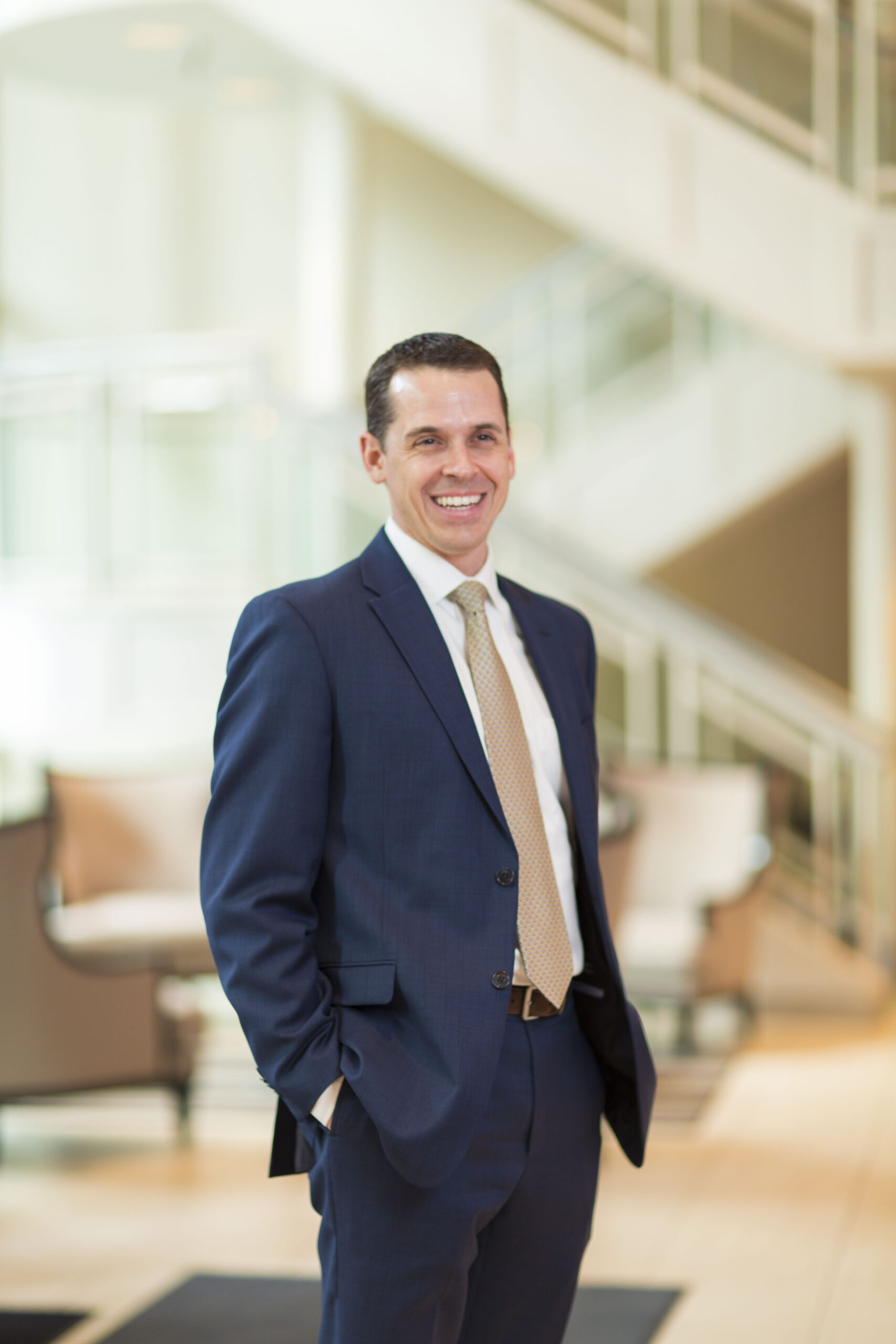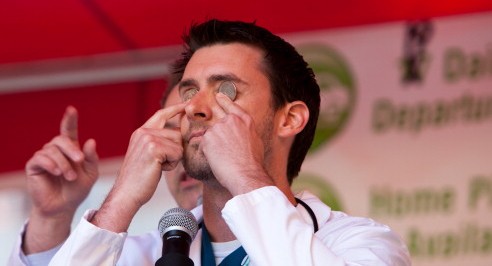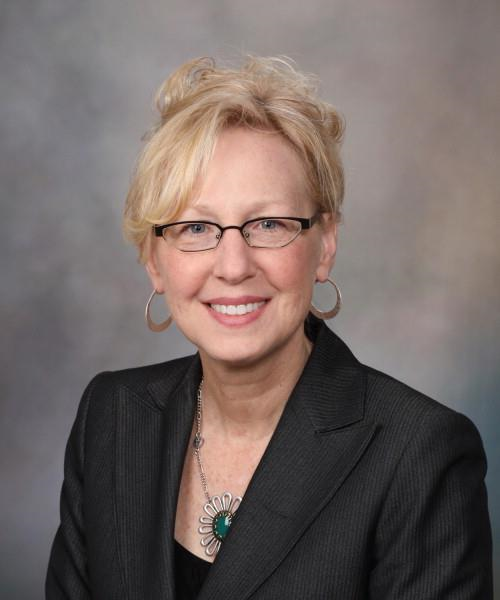In his 17 years at Mayo Clinic in Rochester, Elton Mosman, MBA, CNMT, has worked as a technologist who calms nervous patients, a teacher who inspires students to learn, and a leader who envisions a better way and convinces others to leave the status quo behind.
For these and other roles, Mosman, a 1998 graduate of the Nuclear Medicine Technology
(NMT) Program, is the recipient of the 2016 Mayo School of Health Sciences (MSHS) Recognition of Outstanding Contribution award.
“With the thousands of alumni out there, it’s humbling,” says Mosman, who now works as Critical Care operations administrator for Mayo Clinic in Rochester. “One thing I’ve found at Mayo is, there’s always an opportunity.”
Kimberly Chandler, MEdL, CNMT, director of the Nuclear Medicine Technology Program, nominated Mosman for the award, which was presented to him in April at the MSHS Alumni Association annual meeting.
“I have been honored to work with Elton, learning from him through his innovative approaches and challenging ideas,” says Chandler. “The NMT Program is so fortunate to have such a wonderful advocate for our profession.”
Student: Mosman, who grew up in Mayville, Wisconsin, says he “bounced around” at the University of Wisconsin-La Crosse until he attended an open house for nuclear medicine. “It combines chemistry, physics, biology and the patient-care experience — everything I was interested in all in one career,” he says. After completing the academic program in La Crosse, Mosman attended the 12-month MSHS NMT Program, which emphasized hands-on clinical experience.
“Book smarts will only get you so far,” Mosman says. “At MSHS, you get to apply all
that you’re learning and have a meaningful impact in patient care. The experience is so deep and so broad that you’re well prepared for anything you might encounter.”
Technologist: After graduation, Mosman joined Mayo Clinic as a staff technologist in nuclear medicine. “I knew I was stronger at the bedside than in the classroom,” Mosman says.
“It takes a certain skill to make the patient comfortable with a procedure in nuclear medicine. Just the word ‘nuclear’ makes people nervous.”
Teacher: Mosman taught his first class at MSHS in 1999 and has added more over the years. “I love teaching. It keeps you fresh and on your toes,” he says.
He especially enjoys weaving his personal experience into the technical content. “A procedure manual doesn’t tell you what to do if the patient starts to seize and vomit,” Mosman says. “The thing that catches students’ attention is a real-life situation: ‘The time this happened, here’s what I did and what I could have done differently.’ When they start to ask a lot of questions, you know it’s penetrating.”
Innovator: Early in his career, Mosman’s workday ended at 4 p.m. Thinking he’d like to someday work in administration, he went back to school on weeknights and Saturday mornings to earn his MBA degree. Lessons on quality and efficiency taught him to evaluate practices and, when necessary, ditch any loyalty to “the way we’ve always done it.”
“My nature is to be pragmatic and to use common sense,” Mosman says. “From the MBA, I learned how to apply business sense to the clinical practice to plan strategically, eliminate waste and improve outcomes.” When Mosman became director of the NMT Program in 2009, all testing was done on fill-in-the-bubble forms, and each student received a binder full of print-outs on test results. “A crazy waste of resources,” he recalls. “We had to find a way to do it electronically.” When Mosman was promoted to Radiology operations manager in 2011, he oversaw all Radiology education programs, general radiography clinical operations, and multiple physician divisions. In this new role he became more acutely aware of the need to let the practice drive educational development.
Leader: As he moved up, Mosman led change by informing others about a challenge and encouraging a team effort to devise a solution. The advent of online learning brought a revolutionary shift to MSHS programs. Mosman envisioned content and testing that could be leveraged across all Mayo Clinic campuses and a natural fit for the practice’s need for education in PET, CT and MRI, he says.
“These online programs are now completed,” says Mosman. “Everyone had their own ideas on how to do it. We had to develop the tools and infrastructure and get everybody on board.”
In 2015, Mosman moved to a leadership role in Critical Care, where he has applied aspects of every previous role in his career. “I was ready for a change,” he says. “You need to be a lifelong learner.”





